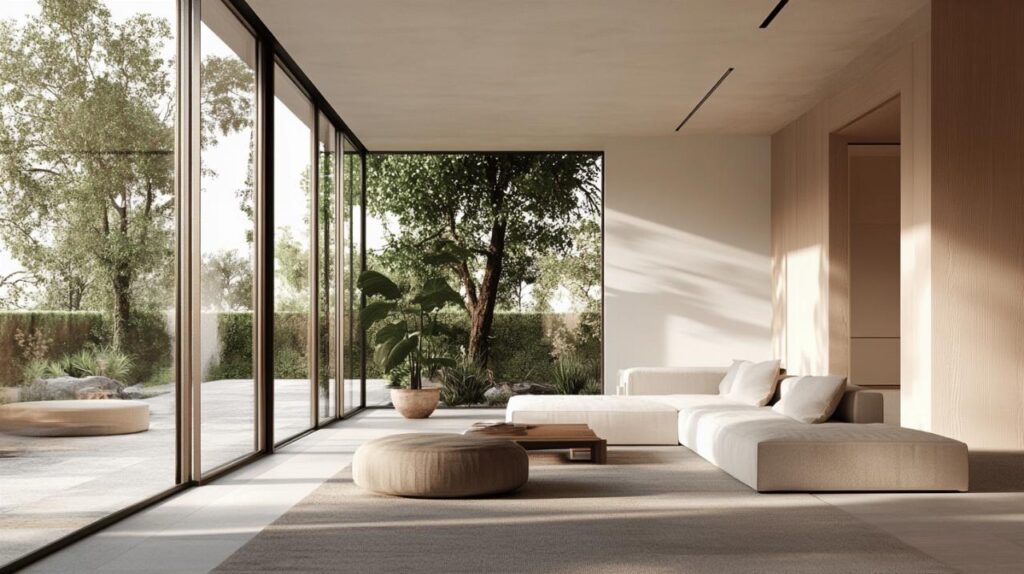The evolution of home design has taken remarkable strides in recent years, reshaping how we interact with our living environments. Today's modern dwellings blend aesthetics with practicality, answering the growing need for spaces that serve multiple purposes while maintaining visual appeal.
Space-maximizing solutions for contemporary homes
As urban living becomes increasingly common, the demand for ingenious space utilization continues to rise. Modern homeowners seek designs that make the most of every square foot without sacrificing style or comfort. Innovative approaches now focus on transforming limited areas into versatile environments that adapt to changing needs.
Transformable furniture that adapts to your needs
The revolution in adaptable furnishings has created exciting possibilities for modern homes. Wall beds that convert to desks during daytime hours, expandable dining tables, and modular seating arrangements have become essential elements in contemporary interiors. Many designers showcase these versatile pieces through Casa Idea exhibitions, highlighting how transformable furniture can instantly reconfigure a space for different activities. These solutions particularly benefit apartment dwellers in dense urban settings like Dubai, where maximizing functionality within compact footprints is crucial.
Vertical storage strategies for limited square footage
When floor space comes at a premium, looking upward becomes the natural solution. Floor-to-ceiling shelving systems, hanging organizers, and wall-mounted storage unlock valuable square footage while maintaining clean sight lines. Built-in cabinetry that extends to the ceiling eliminates wasted space and creates a seamless look favored by minimalist aesthetics. These vertical storage approaches, featured in Casa Idea collections, blend practicality with sophisticated design elements that complement modern interiors. The strategic placement of these systems can visually expand rooms while providing ample storage for daily necessities.
Sustainable materials reshaping interior design
The shift toward eco-conscious living has significantly influenced modern home design trends. Sustainable materials now stand at the forefront of interior design innovation, offering both aesthetic appeal and environmental benefits. Modern living spaces increasingly incorporate these materials as homeowners seek to reduce their ecological footprint while creating beautiful, functional environments. This design philosophy aligns with current market demands for responsible consumption and durability in home elements.
From bamboo flooring to cork wall treatments, sustainable options provide designers with versatile tools to create distinctive spaces. These materials bring unique textures and natural warmth to interiors while supporting environmental conservation efforts. The thoughtful integration of such elements represents a meaningful evolution in how we conceptualize and create contemporary living environments.
Eco-friendly alternatives making waves in home decor
Bamboo has emerged as a leading sustainable material in modern interior design. This fast-growing grass reaches maturity in just 3-5 years compared to hardwoods that take decades, making it an exceptionally renewable resource. Its natural strength and versatility allow for applications ranging from flooring and furniture to decorative accents and textiles.
Reclaimed wood represents another significant trend in sustainable design. By repurposing timber from old barns, factories, and other structures, designers give new life to materials with rich history and character. Each piece tells a story while preventing additional tree harvesting. The distinctive patina and weathering of reclaimed wood create focal points that cannot be replicated with new materials.
Cork offers remarkable sustainability credentials as harvesting does not harm the tree, which regenerates its bark every 9-12 years. This material provides natural insulation, sound absorption, and antimicrobial properties, making it ideal for flooring, wall coverings, and decorative elements. Its light, warm appearance complements many design styles from minimalist to eclectic.
Research indicates green building materials can reduce operational costs significantly, creating financial benefits alongside environmental ones. These sustainable choices often improve indoor air quality and create healthier living environments, addressing multiple aspects of well-being through thoughtful material selection.
Reclaimed and Upcycled Elements Adding Character to Spaces
Upcycled furniture and accessories bring unique personality to modern interiors. Creative repurposing transforms discarded items into statement pieces that serve as conversation starters while reducing waste. From industrial spools converted into coffee tables to shipping pallets reimagined as wall shelving, these elements infuse spaces with creativity and individuality.
Architectural salvage components like vintage doors, windows, and hardware offer authentic character impossible to achieve with mass-produced alternatives. Designers incorporate these elements as functional features or decorative accents that connect contemporary spaces to craftsmanship from earlier eras. The juxtaposition of historic details within modern contexts creates visual interest and depth.
Repurposed textiles represent another dimension of upcycled design. Vintage fabrics, burlap coffee sacks, and other textile waste find new applications as upholstery, cushions, rugs, and wall hangings. These materials bring texture and visual interest while supporting zero-waste design principles.
The adaptive reuse approach extends beyond individual elements to entire structures. Converting former industrial spaces, warehouses, or commercial buildings into residential environments preserves architectural heritage while reducing construction waste and energy consumption. These transformations create distinctive living spaces with soaring ceilings, exposed structural elements, and historical significance.
This movement toward reclaimed and upcycled materials reflects a broader cultural shift valuing authenticity, craftsmanship, and responsible consumption. By incorporating elements with previous lives and stories, modern interiors gain depth and meaning beyond aesthetic appeal. Each repurposed item represents a small but meaningful step toward more sustainable design practices in our living environments.

